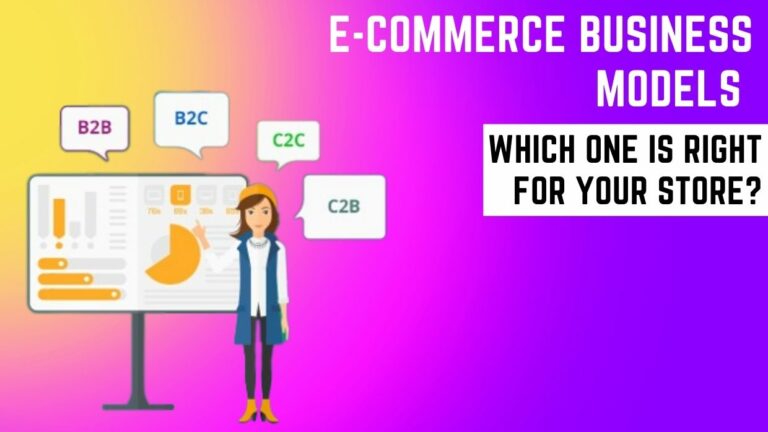What Are Some Important Pros and Cons of E-commerce
In this article, we’ll Explore “What Are Some Important Pros and Cons of E-commerce” The world of business has changed dramatically over the past few years, with more and more companies moving to an e-commerce model. But is this the right choice for your business?
What is E-Commerce?
E-commerce is the buying and selling of goods and services online. It has revolutionized the way we do business, making it easier and more convenient for customers to purchase products and services from the comfort of their own homes. However, there are some disadvantages to e-commerce that businesses should be aware of before they make the switch.
Related topic… Is E-Commerce a Good Career Choice? Here’s What You Need to Know
Advantages of E-Commerce
Increased Reach & Exposure
As the world increasingly moves online, businesses are looking for ways to tap into new markets and reach more customers. E-commerce provides an opportunity to do just that, by selling products and services online. However, before you jump into e-commerce, it’s important to weigh the pros and cons to see if it’s right for your business.
On the plus side, e-commerce gives you the ability to reach a global market. With an online store, you can sell to customers anywhere in the world, 24 hours a day. This means you have the potential to dramatically increase your sales and grow your business. Additionally, customers can purchase items from your store without having to come to your physical location. This is especially convenient for customers who live far away or who are unable to visit your store in person.
There are also some drawbacks to e-commerce that you should be aware of. One of the biggest challenges is shipping products to customers. If you’re selling physical goods, you’ll need to set up a system for packaging and delivery that meets customer expectations.
This can be costly and time-consuming, particularly if you’re shipping internationally. Additionally, managing an online store requires significant time and effort. You’ll need to design and build your store, create product descriptions and photos, process orders, and payments, and provide customer service – all while ensuring that your website is secure against hackers.
Ultimately, whether or not e-commerce is right for your business depends on your goals and resources. If you’re looking for a way to increase your reach and exposure, selling online is certainly worth considering. But if you don’t have the time or resources to manage an online store, it may not be the best option for you.
Cost Savings
There are many potential cost savings associated with e-commerce, including lower costs for inventory, warehousing, and shipping. E-commerce can also help businesses save on advertising and marketing expenses by making it easier to reach a wider audience more cheaply and efficiently. Additionally, businesses can avoid the cost of physical storefronts and the staff required to run them.
Automation
E-commerce automation can save your business time and money. By automating your e-commerce processes, you can free up your staff to focus on other tasks and reduce the chance of human error. However, e-commerce automation also has some drawbacks. Before deciding if e-commerce automation is right for your business, consider the pros and cons carefully.
PROS:
- E-commerce automation can save your business time and money.
- Automating your e-commerce processes can free up your staff to focus on other tasks.
- E-commerce automation can reduce the chance of human error.
- Automating your e-commerce processes can help you scale your business more easily.
- E-commerce automation can improve customer satisfaction by providing a more streamlined experience.
- Automating your e-commerce processes can help you better manage inventory levels and avoid stockouts.
- E-commerce automation can improve security by reducing the need to handle sensitive information manually.
CONS:
- E-commerce automation requires an upfront investment of time and money to set up and maintain..
- E-Commerce automation can create new challenges and complexities, such as ensuring data integrity across multiple systems..
- If not properly managed, automated eCommerce systems can become overloaded and bogged down, impacting performance..
- There is always a risk that automated systems will fail or encounter errors, leading to customer dissatisfaction.
- Automation can also lead to job losses, as some manual tasks become obsolete..
- Finally, e-commerce automation requires a strong understanding of the underlying technology, which can be difficult for those without technical experience.
Flexibility & Scalability
E-commerce is often lauded for its flexibility and scalability. But what does that mean, exactly? And is it right for your business?
Flexibility & Scalability
E-commerce is highly flexible and scalable, meaning it can be adapted to suit the needs of almost any business. Whether you’re a small startup or a large enterprise, e-commerce can be tailored to your specific needs.
For example, if you’re a small business with limited resources, you can start small and scale up as your business grows. Alternatively, if you’re a large business with complex requirements, you can customize your e-commerce solution to meet those needs.
The bottom line is that e-commerce is highly adaptable, making it an ideal solution for businesses of all sizes.
Disadvantages of E-Commerce
Security Concerns
When it comes to e-commerce, security is always a major concern. After all, you’re dealing with sensitive customer information and transactions. You need to make sure that your website is secure and that your customers feel confident about buying from you.
There are a few things you can do to help ensure the security of your e-commerce site:
- Use a secure server: This will help protect your customers’ information.
- Get an SSL certificate: This will encrypt communication between your website and your customers’ browsers, making it more difficult for hackers to intercept data.
- Use a payment gateway: This will add an extra layer of security when processing payments.
- Keep your software up to date: This will help close any potential security holes in your website.
Making sure your e-commerce site is secure is important for both you and your customers. By taking some simple steps, you can help give everyone peace of mind.
Complexity & Technical Challenges
E-commerce can be a great way to reach new customers and grow your business, but it’s not without its challenges. One of the biggest challenges you’ll face is complexity. There are a lot of moving parts to an e-commerce business, from setting up your website to processing orders and shipping products.
You’ll also need to deal with technical challenges like website security and data privacy. Make sure you have the resources in place to handle these challenges before you launch your e-commerce business.
Lack of Personal Interaction
In-person interaction between customers and businesses is one of the key aspects of a successful e-commerce strategy. Customers want to be able to talk to someone in person about their questions or concerns, and they also want to be able to see and touch the products they’re considering purchasing. Lack of personal interaction can be a major downside of e-commerce for businesses that are not prepared to invest in other ways of building relationships with their customers.
Learn more… What Is E-Commerce? An Essential Guide To Understanding Online Shopping
Strategies to Maximize Benefits & Minimize Risks
There are many different strategies that businesses can use to maximize the benefits of e-commerce and minimize the risks.
Some of the most common strategies include:
- Diversifying your product offering: By offering a wide range of products and services online, you can reach a larger audience and increase your chances of making sales.
- Offering discounts and coupons: Discounts and coupons are a great way to attract customers and encourage them to make purchases.
- Providing excellent customer service: Good customer service is essential for any business, but it is especially important in e-commerce. By providing outstanding customer service, you can build trust with your customers and ensure that they keep coming back.
- Creating a user-friendly website: A well-designed website that is easy to navigate will help improve the user experience and make it more likely that visitors will make purchases.
- Accepting multiple payment methods: Offering multiple payment options will make it easier for customers to complete their transactions.
By following these strategies, businesses can maximize the benefits of e-commerce while minimizing the risks.
read more… Understanding Funnels In Business: A Beginner’s Guide
Conclusion
In conclusion, e-commerce is a great way to reach more customers and increase sales. However, it’s important to weigh the pros and cons of e-commerce before committing your business to this online platform. The key is finding an e-commerce solution that meets your needs while still giving you the flexibility to scale up or down as needed. With careful consideration and research, you can make sure that implementing an e-commerce shop makes sense for your unique situation and goals.







